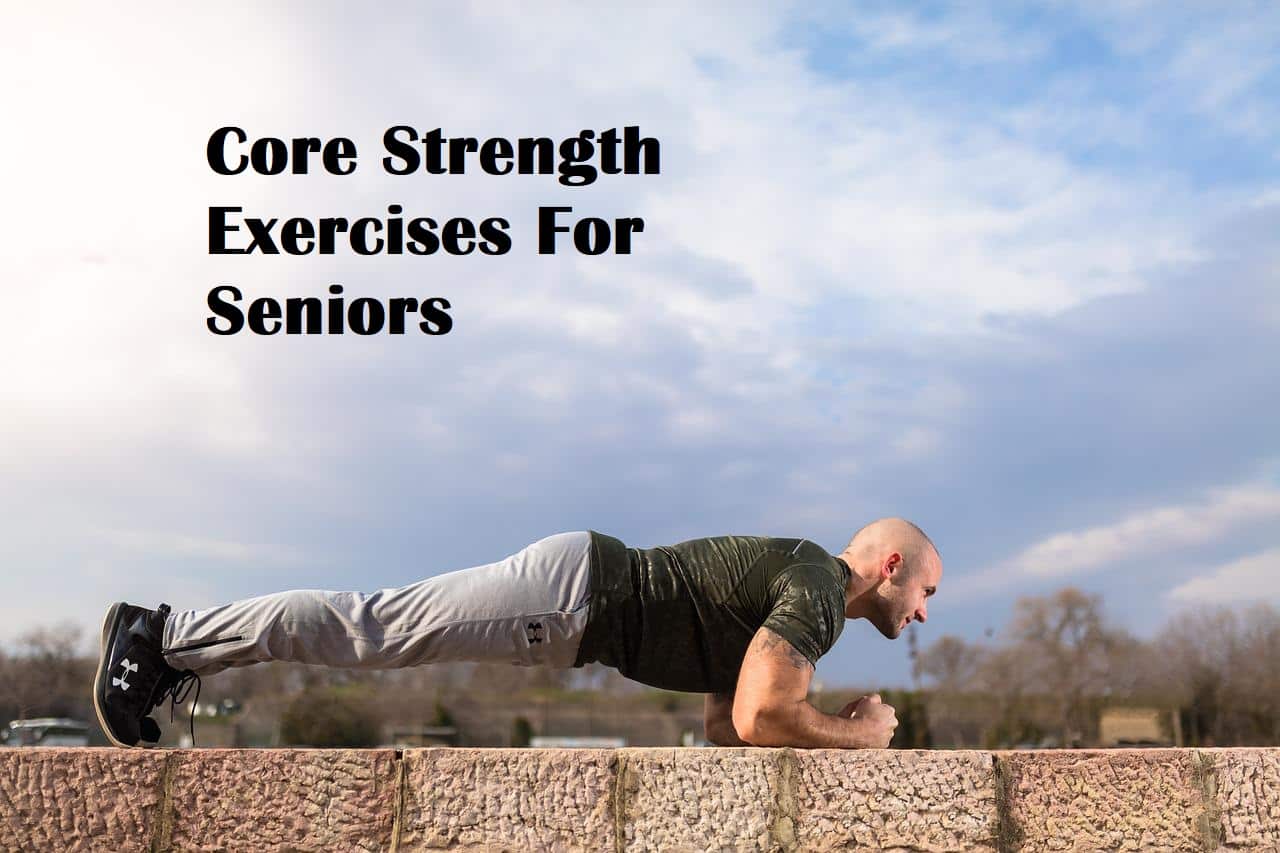Welcome friend! In this post, you will learn about core strength exercises for seniors. Core strength is very important for your back and spine health. As well as for improving posture and functional strength.
I’m sure you have heard about the importance of core strength and core exercises on the TV and in health magazines. Maybe even from your physician.
If you are not familiar with what the “core” exactly means, don’t worry, we will go into detail about the muscles from the core and what their functions are.
Many people associate the core with abs. While they are an important part of the core, they are by far not the only muscle group in the core.
Let’s start by looking at what forms your core and what are its functions. Then we will talk about why core strength is especially important for seniors.
Then we will look at some simple exercises you can do to strengthen your core.
So let’s get cracking!
What Is The Core
There is this very common misconception that core is just a synonym for the abdominals. There are tons of articles written about core exercises that only target the abs. This is simply wrong. I talked more about this in the article Sixpack Abs After 50
We will need to look at the functions of the core to better understand the muscles involved.
The core has four important functions:
- Keeping the spine aligned and supported
- Transferring force between the lower body and the upper body
- Protecting the internal organs and the spine
- Bending and twisting the torso
As you can see the core refers to pretty much the whole musculature of your torso. Depending on who you ask the core can even include the glutes, which are partly responsible for keeping our back straight, and the upper back and neck musculature that support the thoracic and cervical spine.
That’s why it is important to improve the strength of the whole body with functional multi-joint movements because it’s impossible to isolate all these muscle groups.
Still, there are specific core exercises that are very good for improving the problem areas which include the deep back and abdominal muscles that support the spine and protect the internal organs.
You see our muscles almost always have layers. The midsection of the body has several. It can be hard to activate some of the deep muscles if you don’t do the right exercises. The deep muscles include the deep muscles of the spine like the quadratus lumborum and the interspinales. They also include the deep abdominals like internal obliques and transversus abdominus.
It’s also important to have strong superficial back and abdominal muscles as these provide most of the strength and muscle mass of your midsection. These muscles include the rectus abdominus (the six-pack), external obliques (side muscles) and erector spinae.
I talked more about the back musculature in the article Back Strengthening Exercises For The Elderly.
Why Core Strength Is Important For The Elderly
As we get older our bones, ligaments, and muscles start to atrophy and deteriorate. This can cause many issues that cause pain and limit mobility.
One of these issues is the compression of the spine and slouching of our posture. This can result in back pain and a lack of functional strength.
When your posture is bad all the big muscles of your torso tire much faster during activity because they are not in their optimal position.
The muscles of the core and the back help to keep your spine and posture good. They work essentially as the best back brace you could ever have.
The natural deterioration of these muscles can be countered with strength training. So strong core muscles are important for both your spinal health and your posture as you age.
The other important thing is that strong core muscles protect against injuries to the spine and internal organs in case of shocks like traffic accidents, falls, etc. As I talked about in the article Fall Prevention For Seniors.
One other common issue with weak abdominals particularly is hernias. These are rarely dangerous but they can be painful, hard to heal, and sometimes require surgery.
So as you can see it’s very beneficial to keep your core muscles strong as you grow older. It helps to protect you from injuries and allows you to live an active lifestyle without mobility issues.
Let’s look at some exercises for developing and maintaining a strong and healthy core!
Seated Core Strengthening Exercises For Seniors
We’ll start with core exercises you can do while sitting. These are great to do while watching the TV for example. If you have disabilities that prevent you from doing standing or lying core exercises these are great as well.
These include different variations of turning and twisting your torso and lifting your legs while you activate your abdominals and back muscles.
Here’s a great seated core exercise routine by Spark People YouTube channel (YouTube embed. Content not owned or created by ElderStrength.com):
One other great core exercise that targets mainly the abs is the stomach vacuum. You simply pull your belly button as far towards your spine as you can and hold it there for a few seconds.
This is great for activating the transversus abdominis, the deep muscle responsible for keeping your waistline in check and supporting your internal organs.
Here’s a great example by ExpertVillage Leaf Group YouTube channel (YouTube embed. Content not owned or created by ElderStrength.com):
Standing Core Strength Exercises For Seniors
There are several core exercises you can do while standing. Leg and back exercises require an active core and will strengthen your core as well.
I suggest doing these core exercises on different days or after them so your core is strong and fresh while doing the back and leg exercises. This is important for injury prevention.
If you have bad knees or back and can’t squat and deadlift, for example, you can still do many core activating activities.
Here’s are some great examples by Flipping50 YouTube channel (YouTube embed. Content not owned or created by ElderStrength.com):
Lying Core Strength Exercises For Seniors
These are core exercises you can do either lying on your back or on all fours. These include different kinds of sit-ups, planks, and arm and leg raises.
Sit-ups can be a great core exercise but it’s problematic for many seniors. Fortunately, you can do a variation known as the crunch if your back starts to hurt from sit-ups. You can learn more about this in the article Sit-ups For Seniors.
Core strength is also especially important for older men looking to get fit. I talked more about this in the article Weight Training For Men Over 60.
Here are some great examples by eHowFitness YouTube channel (YouTube Embed. Content not owned or created by ElderStrength.com)
Conclusion
I hope you enjoyed reading about these core strength exercises for seniors and will try them yourself! If you have any questions or comments, please don’t hesitate to contact us through the comments section below. We promise to always answer as soon as possible!
Having a strong core is probably one of the most important things for a healthy and active lifestyle. I hope these tips will help you maintain a strong core so you can grow old strong and healthy.
Having a strong body is paramount for good quality of life in old age. It might seem like an uphill battle but it can be won. We are not trying to be bodybuilders here but to achieve enough strength to be healthy!
If you haven’t been very active in recent years it can seem scary. The trick is to start very light and to do a bit more each workout. Before you know it, you are much stronger than you were in the beginning. Get going today, you are much stronger than you think!
If you enjoy reading about strength training and general fitness for older people, please bookmark my site and subscribe to my newsletter.
Thanks for reading and see you next time!


Once again a very useful article with knowledge that I shall pass on to my nan! Thanks for a great post. I like how many of these exercises are accommodating to the elderly.
Thanks for the comment Nick! Any healthy senior should be able to use all of these exercises.